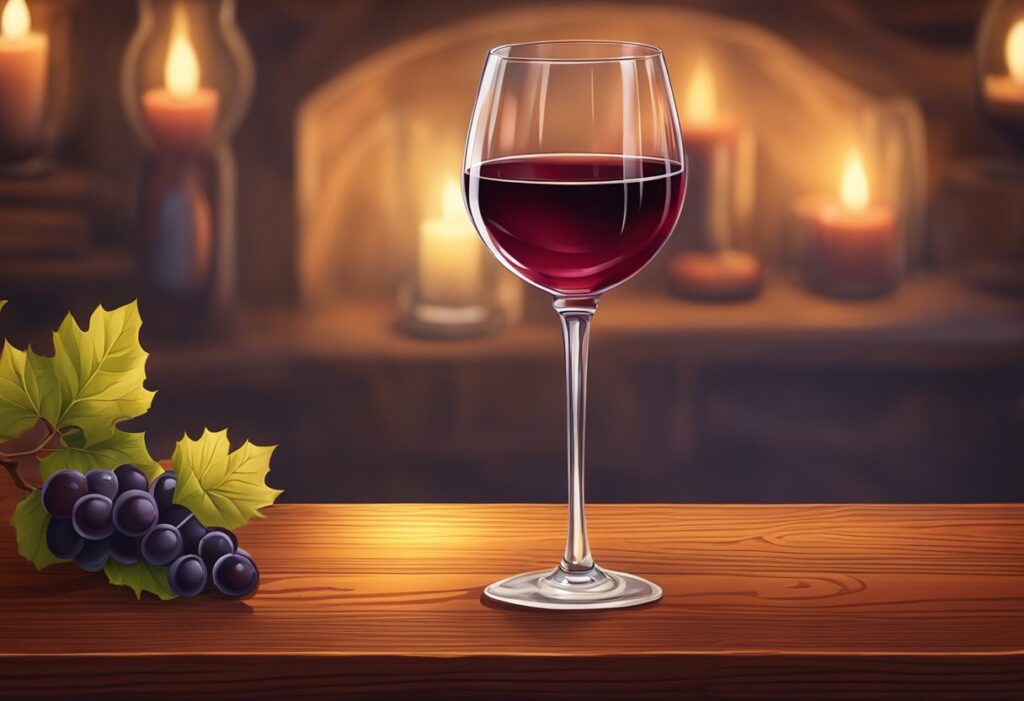Wine tasting is an art that blends sensory experiences with social grace, offering a delightful journey through the world of fine wines. Appreciating the subtleties of wine involves not just a keen palate but also awareness of wine tasting etiquette. Whether you are a novice or a seasoned enthusiast, understanding the do’s and don’ts can enhance the wine tasting experience for yourself and those around you.
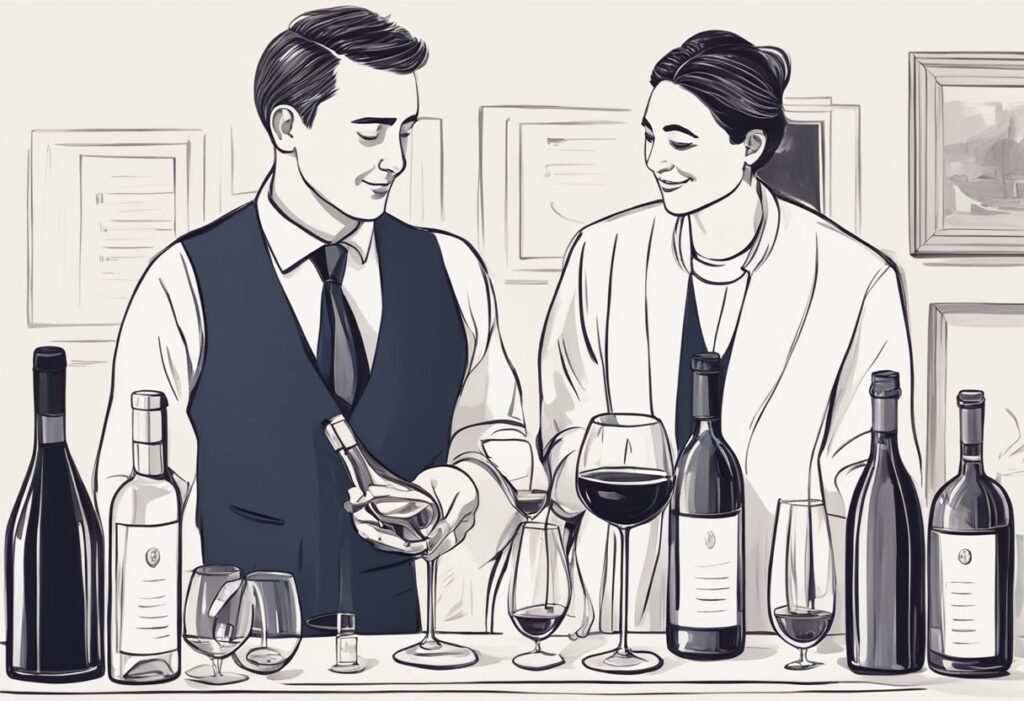
Before setting off to a winery or tasting event, it’s essential to prepare adequately. This includes knowing what to wear, what to bring, and how to approach the wines presented. At the event, you’ll find that your conduct can profoundly impact your experience—from the way you hold your glass to how you converse with winemakers and fellow tasters. Navigating through these nuances can be straightforward with a solid grasp of the basics, allowing you to savor each tasting to its fullest.
Key Takeaways
- Understanding etiquette elevates the wine tasting experience.
- Adequate preparation ensures you make the most of the event.
- Proper conduct respects the wine and enhances social interactions.
Before You Go
Embarking on a wine tasting adventure requires some thoughtful planning to maximize your experience. Whether you’re visiting the rolling vineyards of Napa or exploring a local wine country, attention to these details will set the stage for an enriched visit.
Planning Your Visit
Reservations are often necessary, especially if you’re heading to popular destinations. Research your destination and call ahead to book your tasting appointments. This is crucial during peak seasons in wine regions where venues may be fully booked. Consider your budget; determine if there are any tasting fees and factor them into your planning.
Dress Code
Selecting what to wear is more than a fashion choice; it’s part of wine tasting etiquette. Opt for comfortable, weather-appropriate clothing and flat, sturdy shoes ideal for walking in vineyards if your tour includes it. Bright colors are discouraged as they may attract insects, and darker hues help hide any potential spills.
What to Bring
Bring along a photo ID for age verification and a method of payment for any tasting fees or wine purchases. Consider a notebook to jot down impressions of the wines you taste, or use your phone for notes. If you’re spending the day touring, layered clothing and a water bottle can provide comfort in varying temperatures and keep you hydrated.
Remember, each wine country and vineyard may have its own nuances, so be sure to do a little homework before your visit to ensure a smooth and enjoyable wine tasting experience.
On Arrival
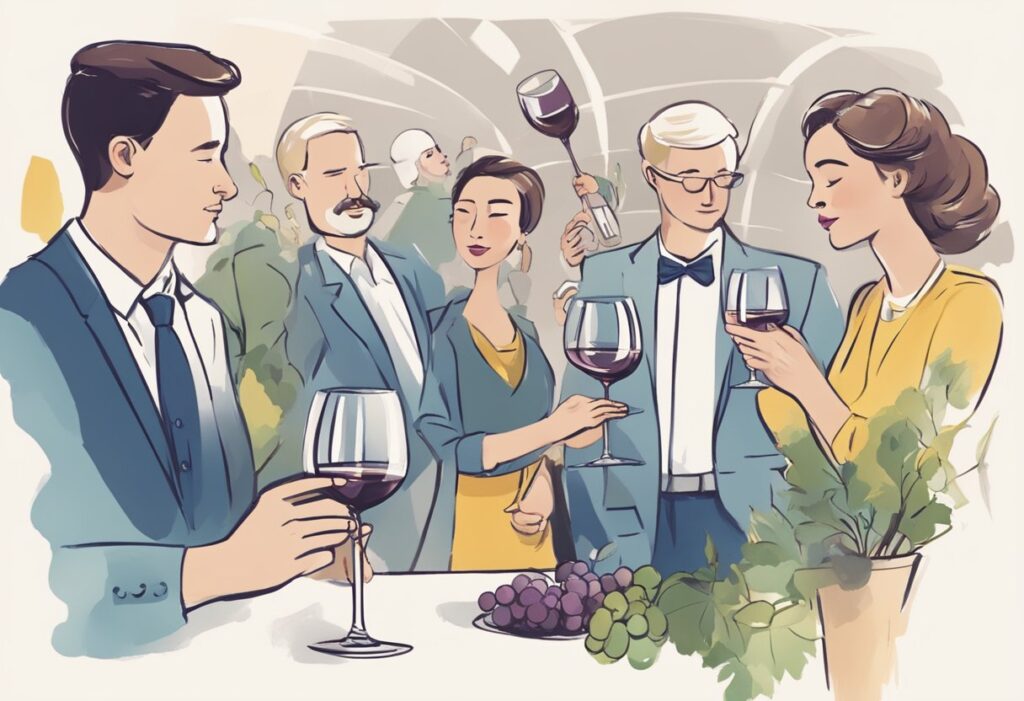
When you arrive at a winery, your wine tasting experience begins with a clear understanding of the check-in process and the setting to ensure a smooth start to your visit.
Check-In Process
Upon arriving, locate the reception to check in for your wine tasting session. Many wineries have established protocols to manage the flow of visitors, especially since the advent of COVID-19. It’s not uncommon for wineries to require a reservation, and this is crucial for groups to avoid any delays. Present any confirmation details you received during booking and be ready to provide a valid ID if asked.
- Reservation: Confirm your booking and timing.
- Group Size: Inform about the number in your party.
- COVID-19: Adhere to any pandemic-related measures.
During certain wine tasting events or if a sommelier is leading the tasting, there might be a brief orientation or introduction upon your arrival. Pay attention as this may include valuable information about the wines you’ll be tasting and the format of the event.
Understanding the Setting
Take a moment to observe your surroundings and understand the setting of the winery. Each venue may have a different layout, and it’s important to know where key areas are, such as the tasting room, restrooms, and any special exhibits or tours that may be part of your experience.
- Tasting Room: This is where you’ll likely spend most of your time.
- Amenities: Locate essential facilities early.
Some wineries may have specific pathways or areas designed to enhance your experience, such as gardens or art displays. If the winery is following specific COVID-19 safety measures, such as social distancing and mask protocols, it’s imperative to respect these guidelines to ensure a safe environment for all guests and staff.
Wine Tasting Basics
Wine tasting is an art that engages your senses, allowing you to appreciate the complexity and craftsmanship in each glass. The proper handling and analysis of wine enhances your tasting experience.
Holding the Glass
To preserve the wine’s temperature and avoid smudging the glass, always hold the wine glass by the stem or the base. If you hold the bowl, the heat from your hand can alter the wine’s temperature, potentially affecting its taste and fragrance.
The Four S’s: See, Swirl, Smell, Sip
See: Look closely at the wine’s color and clarity by tilting the glass away from you against a white background. The appearance can provide clues to the wine’s age and quality.
Swirl: Gently swirl the wine in your glass. This action aerates the wine, releasing its variety of aromas. Swirling can also indicate the wine’s body; the more it clings to the glass, the higher the alcohol or sugar content.
Smell: Bring the glass to your nose and take a deep sniff. The smell, or “nose,” of the wine is an integral part of the tasting experience, revealing scents from fruity to floral to earthy, which are derived from the grape and winemaking process.
Sip: Finally, take a small sip and let it roll around your mouth. Tasting engages your palate and allows you to detect the balance of flavors, the wine’s structure, and the length of the finish.
Tasting Room Etiquette
When you visit a winery, understanding the etiquette can enhance your experience and respect the space and the staff. Below are specific guidelines on how to navigate the space and interact with others during a wine tasting.
Navigating the Space
In a tasting room, move with awareness and respect the boundaries of both the space and fellow tasters. It’s important to be mindful of your surroundings, as some areas may be off-limits to guests.
- Follow any posted signs or guidelines regarding the tasting route or designated areas.
- If there is an option to spit or dump wine, use it, particularly if you’re trying multiple wines. This is not only acceptable but encouraged to avoid overconsumption.
- Keep your group together and avoid blocking access for others.
Interacting with Staff and Others
The staff in the tasting room, often including a sommelier, are there to enhance your experience. Engage with them and don’t hesitate to ask questions about the wines.
- When speaking to staff, be polite and attentive. They have a wealth of knowledge and are often passionate about sharing it.
- Listen respectfully when staff are explaining or pouring wines for you or others.
- Express interest in the wines, and feel free to discuss your own insights or preferences.
Enjoying the Experience
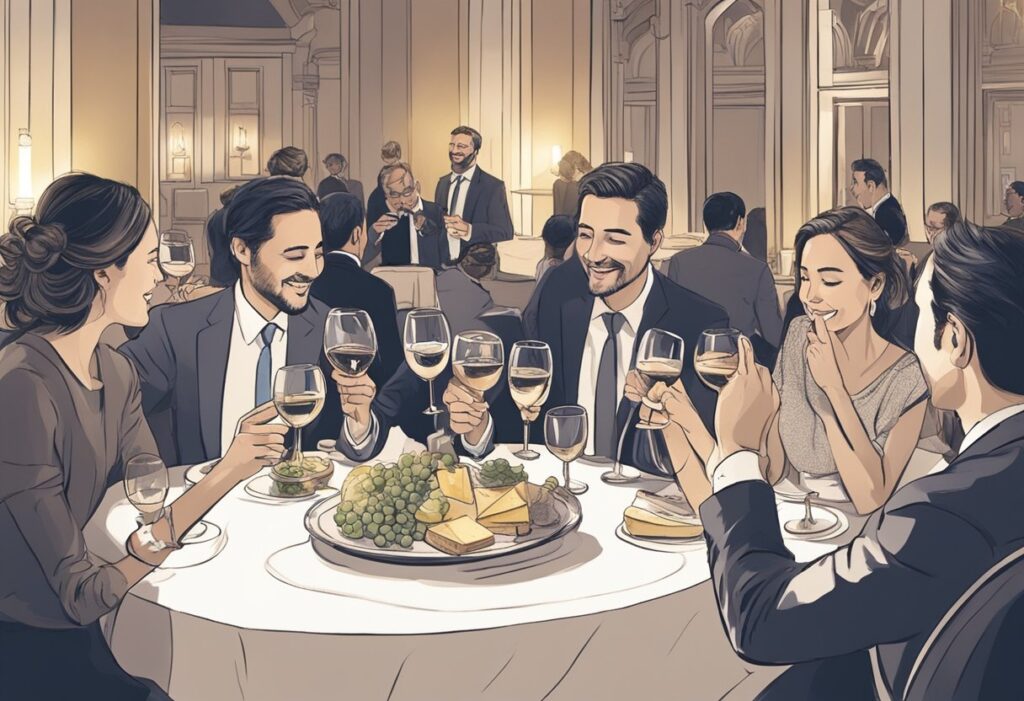
When embarking on a wine tasting journey, it’s crucial to embrace each moment and learn from the experience. Remain open to new flavors and manage your intake to fully appreciate the diversity of the varietals. Keep these goals in mind as you move through each taste.
Learning from the Tasting
A crucial component of wine tasting is education. As you sip, take the opportunity to learn about the varietals you’re experiencing. Take notes on the aroma, flavor profile, and your overall impression of each wine. This is not only for your memory but also to deepen your understanding of different wine characteristics. By doing so, you invest in your growth as a wine enthusiast and enhance your wine tasting experience.
- Note the color: Is it deep ruby or a light straw yellow?
- Inhale the aroma: What fruits or spices come to mind?
- Taste: Allow the wine to coat your mouth and identify the layers of flavor.
Managing Intake
To have fun and remain sharp throughout your tasting, be mindful of your intake.
- Sip sparingly: You’re here to taste, not to drink in volume.
- Cleanse your palate: Drink water or eat crackers between tastings to maintain a clean palate.
- Spit if necessary: Don’t be shy to use spittoons if provided, as it’s part of the tasting culture and allows you to enjoy more samples without overindulging.
By keeping these practices in mind, you can fully enjoy the nuances of each wine and make the most of your wine tasting journey.
Post-Tasting Etiquette
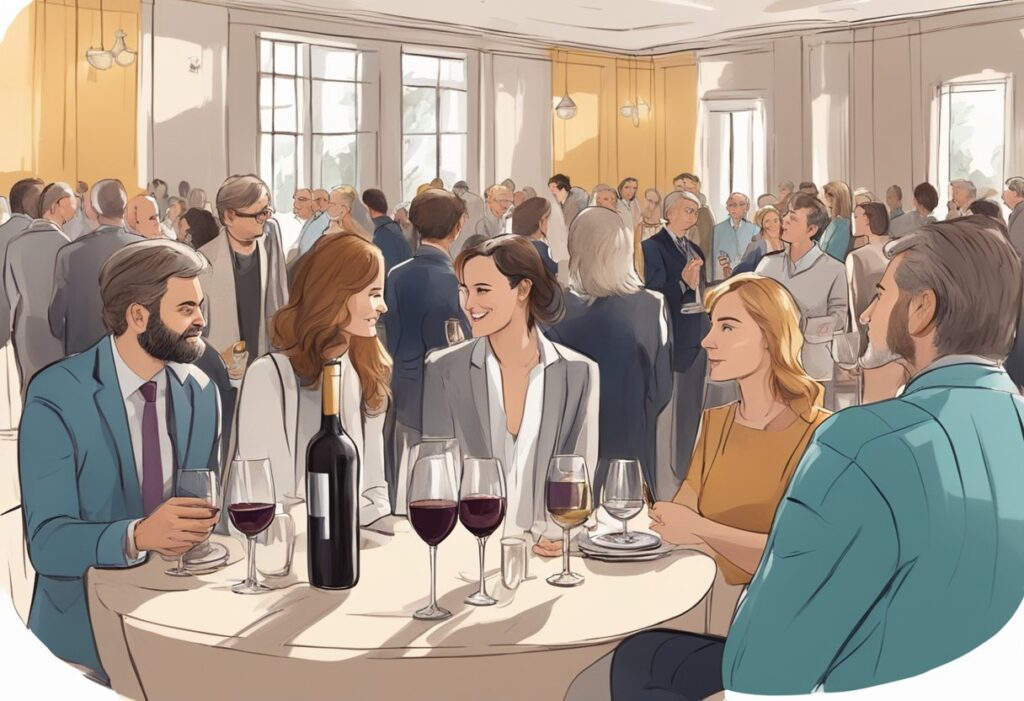
After savoring the bouquet of flavors during a wine tasting, it’s essential to know the appropriate steps to gracefully conclude the experience.
Showing Appreciation
Once your tasting session concludes, expressing gratitude to your host or sommelier is not only courteous but also fosters a relationship for future visits. If the service was exceptional, consider leaving a tip to show your appreciation. Tipping guidelines can vary based on the country and establishment, so it’s a good practice to inquire about the norms at your destination. Here’s a basic outline:
- Exceptional service: 15-20% of the tasting fee
- Good service: 10-15% of the tasting fee
- Standard practice where tipping isn’t customary: A sincere thank you
Exploring Further Options
If the wines or the experience captivated you, inquire about vineyard tours, upcoming events, or wine clubs. These opportunities allow you to delve deeper into the wine-making process and can enhance your understanding and enjoyment of wine. Remember to dress the part, keeping your wine tasting attire smart-casual unless otherwise specified.
- Join a Wine Club: Many wineries offer membership programs that provide exclusive benefits like discounts, events, and first-rights to new releases.
- Book a Vineyard Tour: Get a behind-the-scenes look to see the journey from grape to glass.
By showing appreciation and engaging with further options, you ensure your wine tasting experience is memorable and complete.
Special Considerations
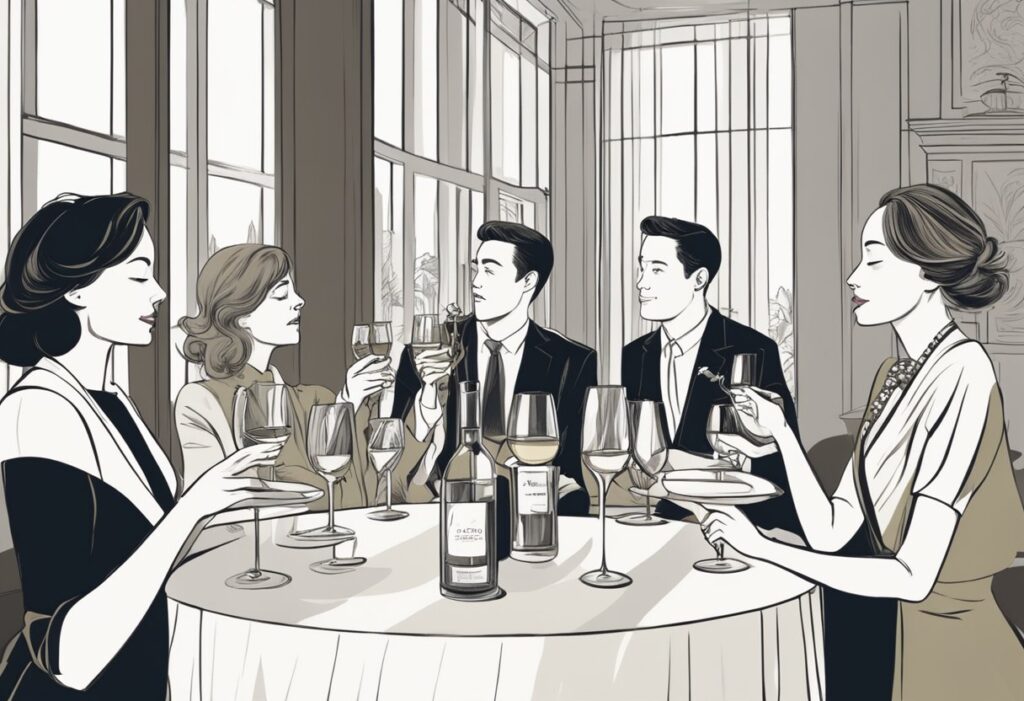
When embarking on a wine tasting journey, it is essential to consider how global health guidelines and group dynamics can shape your experience. Being mindful of these factors ensures a pleasant visit for you and others.
Tasting During COVID-19
In response to the pandemic, wineries have adapted their tasting experiences to prioritize your safety. You will often find:
- Social distancing measures in place
- Requirement for mask-wearing when not actively tasting
- Enhanced hygiene protocols, such as frequent sanitization of surfaces
Make sure to check the winery’s specific COVID-19 guidelines before your visit, as they may require reservations or have limited seating to ensure social distancing.
Visiting with a Group or Family
Wineries welcome groups and families, but it’s important to plan ahead:
- Designate a Driver: Always have a designated driver to ensure safety on the road. Many wineries are also in rural locations, where transport options may be limited.
- Book in Advance: Call ahead and secure a reservation, as some wineries might not accommodate large walk-in groups, particularly during peak hours.
- Mind Children and Pets: Not all wineries are child or pet-friendly. Ensure that you check their policy on kids & pets and come prepared to supervise them at all times.
By adhering to these guidelines, you can help create an enjoyable atmosphere for everyone at the winery.
Wine Knowledge and Education
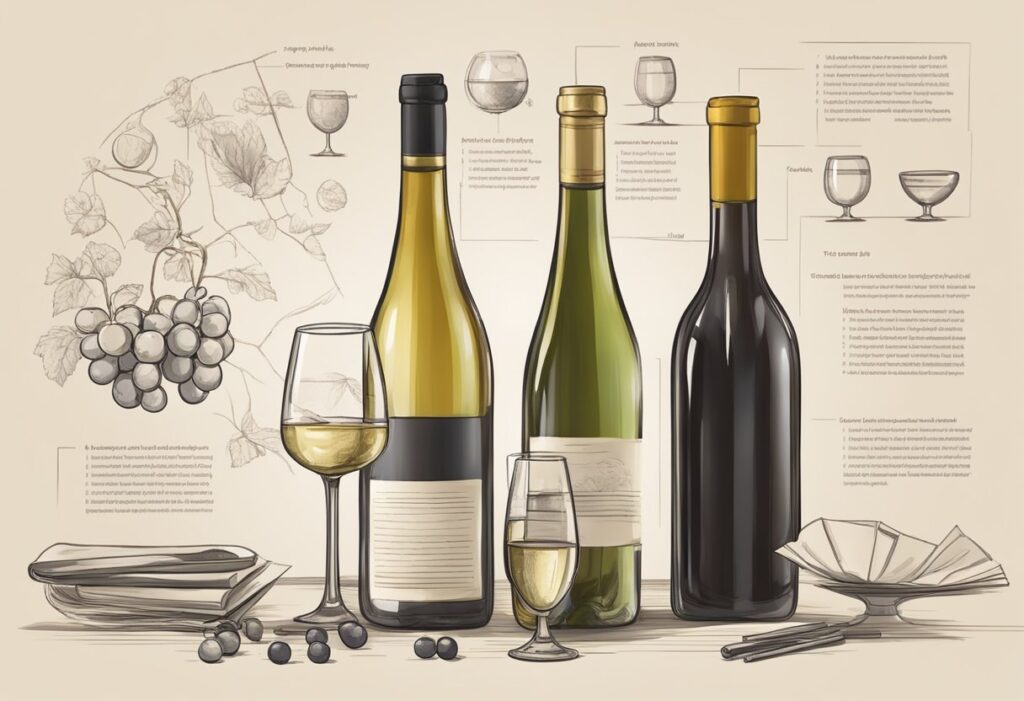
Before stepping into the world of wine tasting, it’s essential to arm yourself with the right knowledge and education. You can greatly enhance your experience by understanding how to ask the right questions and build on the basics of wine appreciation.
Asking the Right Questions
When participating in a wine tasting, don’t hesitate to ask questions. Inquiries about the wine’s origin or the winemaker’s process can provide valuable context and insight. Start by asking about the vintage or the reasons behind a particular wine’s fragrances. This can lead to a deeper understanding of how factors such as climate and soil can influence the tannins and aroma of the wine.
Building on the Basics
To truly appreciate wine, begin by learning the rules of wine tasting. Initially, focus on using your senses: sight to observe the wine’s color and consistency, and inhale deeply to identify different aromas. A solid grasp of the basics sets the foundation for advanced knowledge, such as identifying the subtleties of a wine’s character and how aging impacts its profile.
Frequently Asked Questions
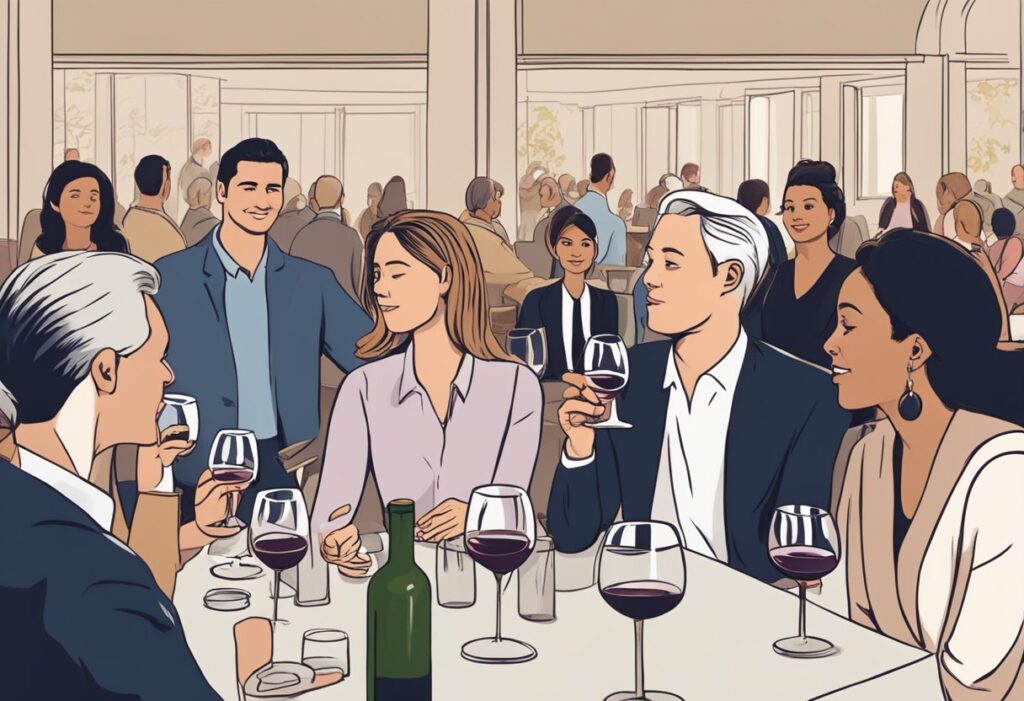
Entering the world of wine tasting can come with a unique set of customs and questions. Here are some specifics to guide you through the experience.
What should one bring to a wine tasting event?
You should bring a photo ID for age verification and a method of payment in case you wish to purchase wine. Consider a notepad for taking notes on the wines you taste.
How does one behave in a tasting room to show proper etiquette?
In a tasting room, be respectful of the space and others by speaking at a moderate volume and avoiding the use of heavy perfumes that could interfere with the aroma of the wines. For insight into proper tasting room behavior, you may find Wine Folly’s guidelines quite helpful.
Is purchasing wine mandatory after attending a tasting session?
You are not obligated to purchase wine after a tasting. However, if you enjoyed the experience or found a wine you liked, buying a bottle can be a good way to show appreciation.
What are appropriate dining options to consider before attending a wine tasting?
Before attending a wine tasting, opt for a light meal that won’t overpower your palate. Foods with neutral flavors, such as crackers or bread, are advisable.
What are the key steps to keep in mind when tasting wine for the first time?
For first-time wine tasters, remember to look at the wine’s color, swirl to release aromas, sniff, and then taste. Observe the wine’s body and finish. Tour DeVine by Heli offers a brief overview of the key tasting steps.
Should one tip the staff at a wine tasting, and if so, how much is customary?
Tipping at a wine tasting is not mandatory, but it is a kind gesture if you received good service. An amount between 10-20% is typical, similar to regular dining experiences.

